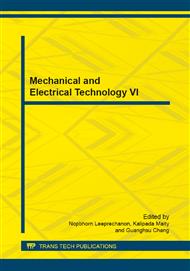p.3
p.8
p.13
p.18
p.23
p.28
p.33
p.38
Influence of Pipe Diameters on Shapes of Air Taylor Bubbles in Small Pipes Containing Stagnant Water
Abstract:
The aim of the work is to computationally investigate the influence of pipe diameters on shapes of air Taylor bubbles in small pipes, containing stagnant water. The examined pipe diameters are selected between 6.5 and 11 mm so that flows around the bubbles are laminar. The proper Taylor bubble shape of each pipe size is determined by varying the bubble shape until the air pressure distribution inside the bubble is uniform. Computational results show that the Taylor bubble shape will be slenderer if the pipe diameter is larger.
Info:
Periodical:
Pages:
18-22
Citation:
Online since:
August 2014
Authors:
Keywords:
Price:
Сopyright:
© 2014 Trans Tech Publications Ltd. All Rights Reserved
Share:
Citation:


